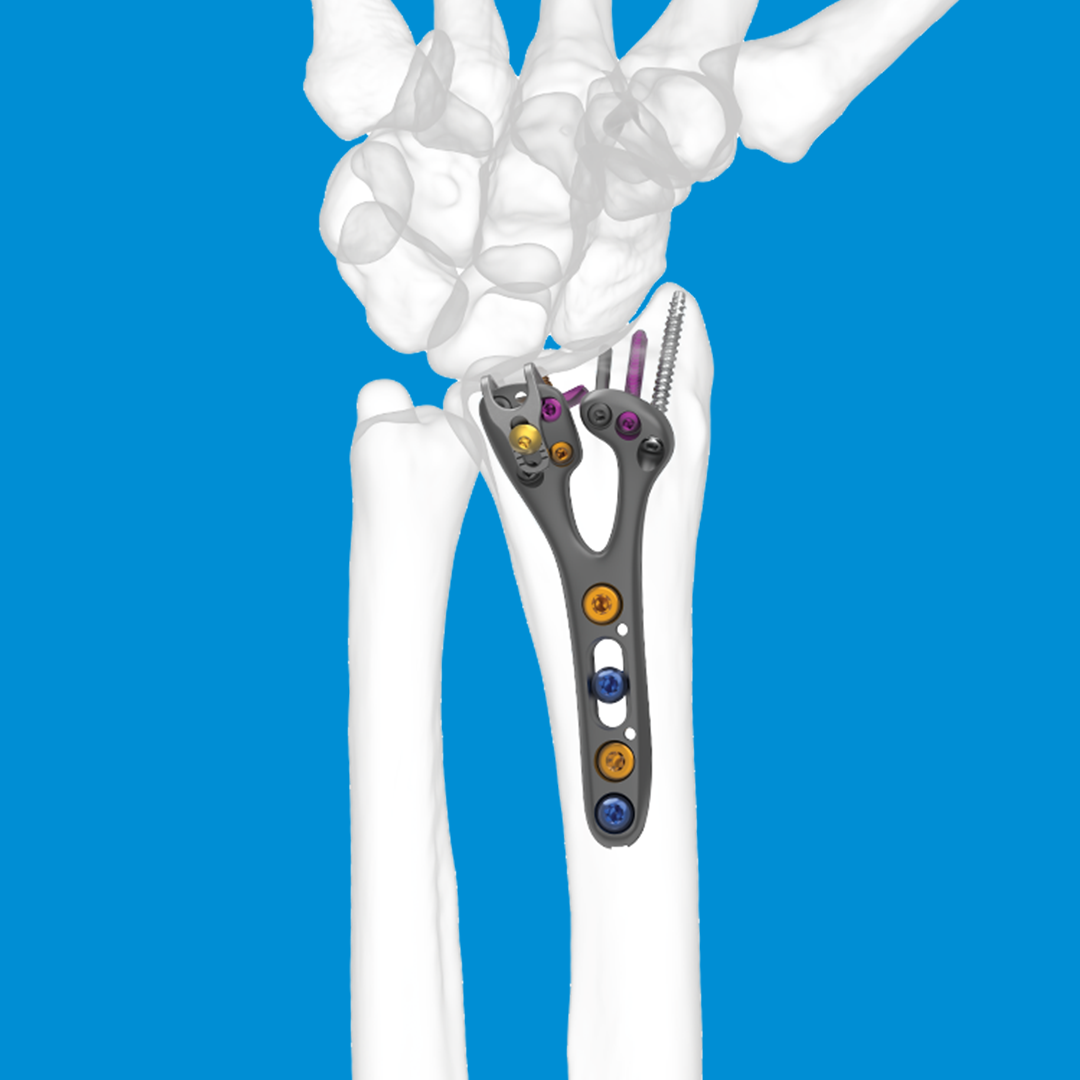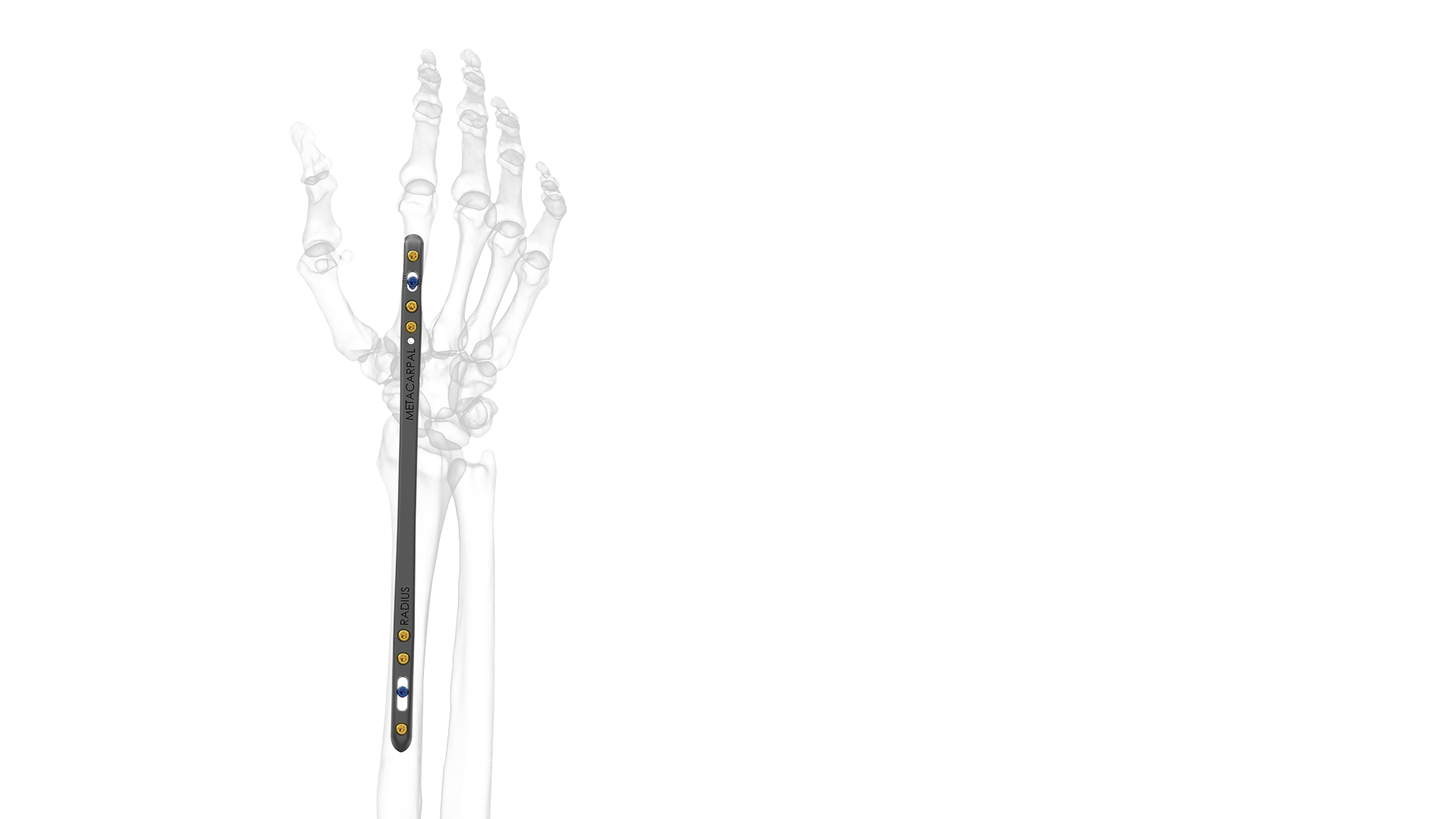
Dorsal Spanning Plate
Features
- Designed to support a dorsal approach to distal radius
- Anatomically contoured with a low profile
- Used worldwide for complex articular fractures
The Dorsal Spanning Plate
The Geminus dorsal spanning plate is specifically engineered to support dorsally displaced and comminuted fractures of the distal radius. Choosing a dorsal approach to radius affords you direct access to the site of the fracture and in complex articular fractures it provides exposure to the joint’s surface. The dorsal plating system works to support and reduce the displaced fracture fragments with its anatomically contoured shape and low profile.
INTERESTED IN DORSAL SPANNING PLATE?
If you would like more information regarding Skeletal Dynamics Dorsal Spanning Plate.
Interested in the Dorsal Spanning Plate ?

10º of volar apex angulation places the hand in a position of improved function
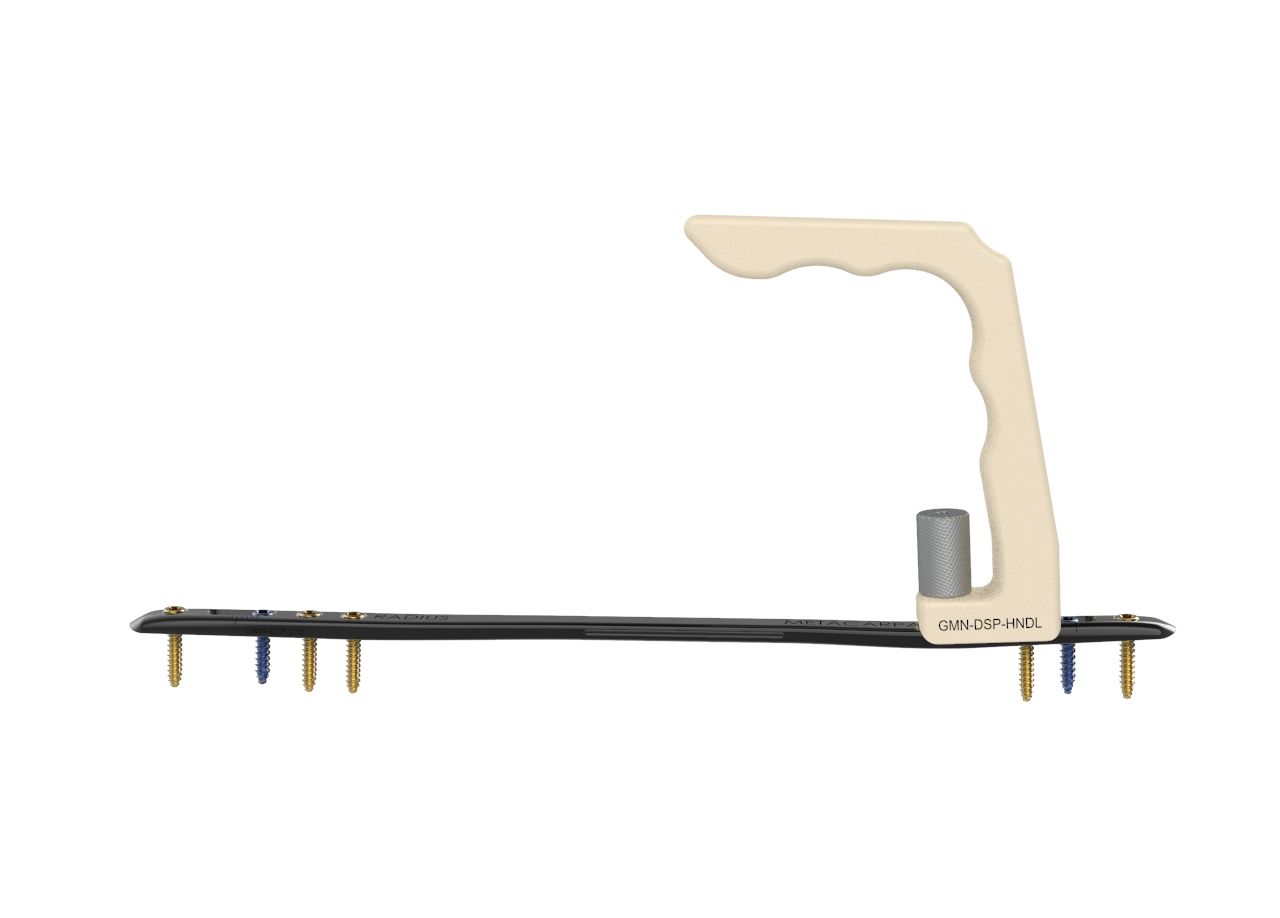
Controlled Insertion
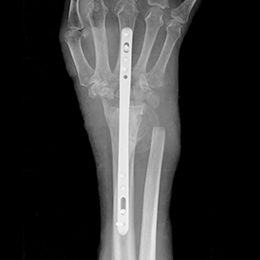
360º Rotation
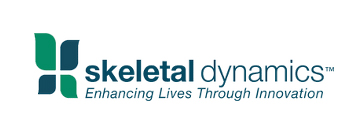
Founded in 2007 by Dr Jorge Orbay, MD, Skeletal Dynamics set out to provide innovative, science-based solutions to solve and understand the clinical challenges of upper extremity surgery and unmet clinical needs. Skeletal Dynamics is the only medical device company that is 100% solely focused on the upper extremities. Distributors of Skeletal Dynamics are selected based on individual integrity, industry experience and clinical knowledge and LEDA is proud to be the leading distributor in the UK for Skeletal Dynamic products including:
Frequently Asked Questions
A dorsal spanning plate is a type of orthopaedic implant used to treat fractures or injuries to the bones of the hand, wrist, or forearm. The “dorsal” aspect of the name refers to the plate being placed on the back of the bone, known as the dorsal side. The plate is shaped to fit over the top of the affected bone, extending across the fracture site. It is then secured to the bone with screws to help hold the bone in place while it heals. Dorsal spanning plates are commonly used in cases of comminuted fractures, distal radius fractures or fractures involving the joint surface.
A dorsal spanning plate is used when there is a fracture or injury to the bones of the hand, wrist, or forearm. The plate is used to stabilise the bones and ensure the fracture heals properly. Dorsal spanning plates are usually only used in severe cases of fracture healing especially when non-surgical treatments such as casting or splinting prove to be less effective than surgery. In some cases, surgery may be required due to the location of the fracture and type of fracture including:
- Fractures involving the joint surface
- Comminuted fractures
- Fractures of the distal radius
- Fractures of the scaphoid bone
- Fractures of the metacarpal bones
There are several benefits to using a dorsal spanning plate including:
Stability
A dorsal spanning plate provides stability to the affected bone which prevents further damage and promotes proper healing of the fracture.
Reduced pain
Due to the stability of the bone, a dorsal spanning plate can help to reduce the pain associated with a fracture and make the recovery process more comfortable.
Specific benefits of using the plate will depend on the individual patient’s needs and the specifics of their injury which will be explored fully during a consultation.
A dorsal approach to radius refers to the surgical technique used to gain access to the bones of the wrist and forearm. This is usually done through a small incision made on the dorsal side ( back of the hand).
Compared to other surgical approaches, the dorsal approach to the radius is minimally invasive and can lead to less scarring and a faster recovery time. However, the suitability of this approach will depend on the specifics of the injury and the individual patient’s needs and what the surgeon determines to be the best approach.
